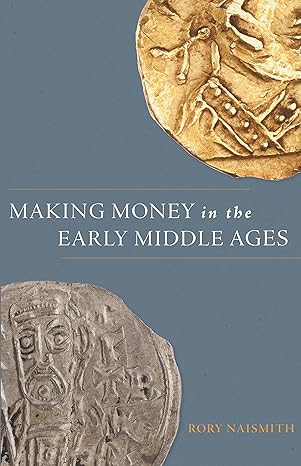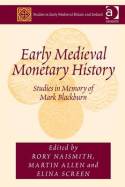Making money in the early Middle Ages
- ISBN: 9780691177403
- Editorial: Princeton University Press
- Fecha de la edición: 2023
- Lugar de la edición: Princeton (NJ). Estados Unidos de Norteamérica
- Encuadernación: Cartoné
- Medidas: 24 cm
- Nº Pág.: 540
- Idiomas: Inglés

An examination of coined money and its significance to rulers, aristocrats and peasants in early medieval Europe
Between the end of the Roman Empire in the fifth century and the economic transformations of the twelfth, coined money in western Europe was scarce and high in value, difficult for the majority of the population to make use of. And yet, as Rory Naismith shows in this illuminating study, coined money was made and used throughout early medieval Europe. It was, he argues, a powerful tool for articulating people's place in economic and social structures and an important gauge for levels of economic complexity. Working from the premise that using coined money carried special significance when there was less of it around, Naismith uses detailed case studies from the Mediterranean and northern Europe to propose a new reading of early medieval money as a point of contact between economic, social, and institutional history.
Naismith examines structural issues, including the mining and circulation of metal and the use of bullion and other commodities as money, and then offers a chronological account of monetary development, discussing the post-Roman period of gold coinage, the rise of the silver penny in the seventh century and the reconfiguration of elite power in relation to coinage in the tenth and eleventh centuries. In the process, he counters the conventional view of early medieval currency as the domain only of elite gift-givers and intrepid long-distance traders. Even when there were few coins in circulation, Naismith argues, the ways they were used-to give gifts, to pay rents, to spend at markets-have much to tell us.
Chapter 1. Introduction
The Dark Age of Currency?
The Dark Age of Money?
The Meanings of Money
Situating Early Medieval Money
Investigating Early Medieval Money
Sources and Approaches
Part I
Chapter 2. Bullion, Mining, and Minting
Tracing the Origins of Gold and Silver
Bullion, Profits, and Power
Circulation of Bullion: Dynamics
Imports of Bullion: Three Case Studies
Conclusion
Chapter 3. Why Make Money?
How to Make Coined Money How Large Was the Early Medieval Currency?
Why Were Early Medieval Coins Made?
Fiscal Minting
Impermeable Borders
Renovatio Monetae
Private Demand
Conclusion
Chapter 4. Using Coined Money
Money and Gift-Giving
Making a Statement: Money, Status, and Ritual
Giving God, King, and Lord Their Due
Monetary Obligations
Credit
Fines and Compensation
Getting Whatever You Want: Money and Commerce
Markets and Prices
Elites and Coined Money
Peasants and Coined Money
Conclusion
Chapter 5. Money, Metal, and Commodities
Money and Means of Exchange Coin and Bullion: Categories or Continuum?
The Social Dynamics of Mixed Moneys
Case Study 1: Northern Spain
Case Study 2: The Viking World
Case Study 3: Tang and Song China
Conclusion
Part II
Chapter 6. The Roman Legacy
Later Roman Coinage: An Age of Gold
"Money, the Cause and Source of Power and Problems"
Currencies of Inequality
"Caesar Seeks His Image on Your Gold": Gold and the State
State and Private Demands in Dialogue
Conclusion
Chapter 7. Continuity and Change in the Fifth to Seventh Centuries
Getting By in a Time of Scarcity: Low-Value Coinage Gold, Taxes, and Barbarian Settlement in the West in the Fifth and Sixth Centuries
Post-Roman Italy
New Gold 1: Merovingian Gaul
New Gold 2: Visigothic Iberia
New Gold 3: Early Anglo-Saxon England
Conclusion
Chapter 8. The Rise of the Denarius c. 660-900
From Gold to Silver
Questions of Origins
The Silver Rush c. 660-750 1: England
The Silver Rush c. 660-750 2: Frisia and Francia
Money and Power in the Carolingian Age
Agency in Carolingian Coin Circulation
Regional Distinctions in Coin Circulation
Minting and Royal Authority
Minting and Local Elites Southern England c. 750-900: A Parallel World?
The Kingdom of Northumbria
Conclusion
Chapter 9. Money and Power in the Tenth and Eleventh Centuries
At the Dawn of the Commercial Revolution?
A Monetising Economy
Money, Morality, and the Routinisation of Coin
Money, Markets, and Lands: Mechanisms of Monetisation
The Spread of the Penny
New and Old Mints c. 850-1100
Italy
West Francia
East Francia/Germany
England
Conclusion
Chapter 10. Conclusion: A Sketch of Early Medieval Money







